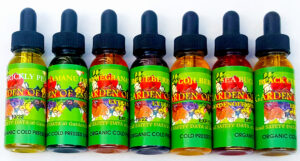Article written by Janice Rosenthal
Owner gardenofessences.com
Owner gardenofessences on etsy
PARABENS
- Butyl, Isobutyl, Methyl, or Propyl Parabens, are preservatives found in many beauty products. When they are absorbed into your skin, over time, they accumulate in the tissues. They mimic estrogen hormones, and can contribute to breast cancer.
- Parabens are still the most common preservative in personal care products, even if many consumers are now avoiding products containing parabens, because of alarming reports, over the past few years.
- Parabens have been found to cause skin irritation, contact dermatitis and Rosacea, in certain individuals, but the main concern is its estrogenic and potentially carcinogenic effects.
- Scientific researchers have found Parabens in samples of breast tumors.
ETHYLHEXYLGLYCERIN
- Supposedly safer than parabens, and advertized as a natural preservative. Its about as natural as plastic, meaning, that the original ingredient was found in nature, but after extensive processing, it becomes an ingredient that is so far from natural, that it can cause skin rashes and eye irritations. The sad thing is that people use these products, assuming that they are safe, then never realize why they have that strange eye irritation, or ongoing skin rash, that is ruining their lives.
PHENOXYETHANOL
- Hailed as the “harmless” alternative to Parabens, it is now used in most of the Natural and Organic ranges of products.
- Phenoxyethanol is listed as a low hazard preservative, and a zero carcinogen, by the EWG Skin Deep Database.
- Often it is found in “natural” products, when the Company states that their products are “paraben-free.”
- BUT, the product’s OWN Material Safety Data Sheet (MSDS) says that Phenoxyethanol is harmful if absorbed through the skin, and that it can cause internal organ damage, if it is used over extended periods of time.
- It can be a moderate to severe eye irritant, which may cause serious damage to the eyes. Therefore, keep products containing it, away from the eyes.
- HOWEVER, it is SUPPOSED to be one of the least dangerous of all the available preservatives. It would be best to use products containing Phenoxyethanol, on limited occasions, and not on a daily basis, as any possible harm to the body, is caused by prolonged exposure.
GRAPEFRUIT SEED EXTRACT
 It is advertized as the most natural preservative available. But there ARE safety concerns:
It is advertized as the most natural preservative available. But there ARE safety concerns:
The “Material Safety Data Sheets for Grapefruit Seed Extract”, found synthetic disinfectants present, within the Grapefruit Seed Extract, which caused a general pattern of eye, skin, and respiratory tract irritation.
In all of the antimicrobial Grapefruit Seed Extracts, the preservative benzethonium chloride was detected.
Also, some Grapefruit Seed Extracts contained the preserving substances triclosan and methyl paraben – both highly toxic (see section on parabens, above).
In only ONE of the grapefruit seed extracts tested, NO preservative agent was found. However, with this extract, no antimicrobial activity could be detected.
Thus, it is concluded that the antimicrobial activity being attributed to grapefruit seed extract, is merely due to the synthetic preservative agents contained within.
FORMALDEHYDE
- Antiseptic formaldehyde is used as a preservative in beauty products.
- On contact, it can trigger allergies in the throat, nose and eyes. In large doses, it can cause cancers, including Hodgkin’s Lymphoma, and Leukemia. Sweden and Japan have banned its use in cosmetics.
- Formaldehyde is a known carcinogen. It causes allergic, irritant, and contact dermatitis, and also headaches, and chronic fatigue.
- There are many preservatives that release formaldehyde, for example, Imidazolidinyl urea and DMDM hydantoin, so that, sadly, formaldehyde will not be transparently listed in the ingredients. Even the word ‘fragrance’ is actually a formaldehyde-releasing chemical substance.
-
Another example is Sodium Hydroxymethyl-glycinate. which is an antimicrobial preservative, that works by forming formaldehyde in cosmetic products. People exposed to such formaldehyde-releasing ingredients may develop a formaldehyde allergy, or an allergy to the ingredient itself. EWG Skindeep Database lists it as a MODERATE to HIGH hazard, and a low carcinogen. Compare that to Phenoxyethanol which they list as a LOW hazard, and a zero carcinogen.
BHA and BHT
- BHA (butylated hydroxyanisole) and BHT (butylated hydroxytoluene) are synthetic preservatives, that are potential allergens with cancer-causing abilities, that can contribute to reproductive problems, and thyroid, liver and kidney damage.
There are many other chemicals which are harmful to health. The above is just a small list of synthetic ingredients to avoid. There are so many more, so keep researching those strange words you see printed on your ingredients labels.
- Essentially, making the change to all-natural products, is the only way to go, if you are serious about protecting your health.
- Don’t forget – long term absorption of the above ingredients, could have serious health consequences for you.
